Just One Day in Berlin? Highlights You Can’t Miss

This post may contain affiliate links. If you make a purchase through them, we may earn a small commission (at no cost to you).
Berlin… A captivating blend of centuries-old culture and edgy modern life – where grand Prussian buildings meet bold street art and global cuisine.
It’s a city with layers upon layers of history, and you feel it everywhere you walk.
We spent one day in Berlin on a cruise stop, when our Viking Ocean Cruises’ ship was in the German seaport of Warnemunde from early morning to late at night.
One of us had never been before – and we were both eager to see and do as much as possible.
If you’re planning a Berlin one-day itinerary, we share the must-see sights below – along with tips on getting around and the best guided tours to make the most of your time.
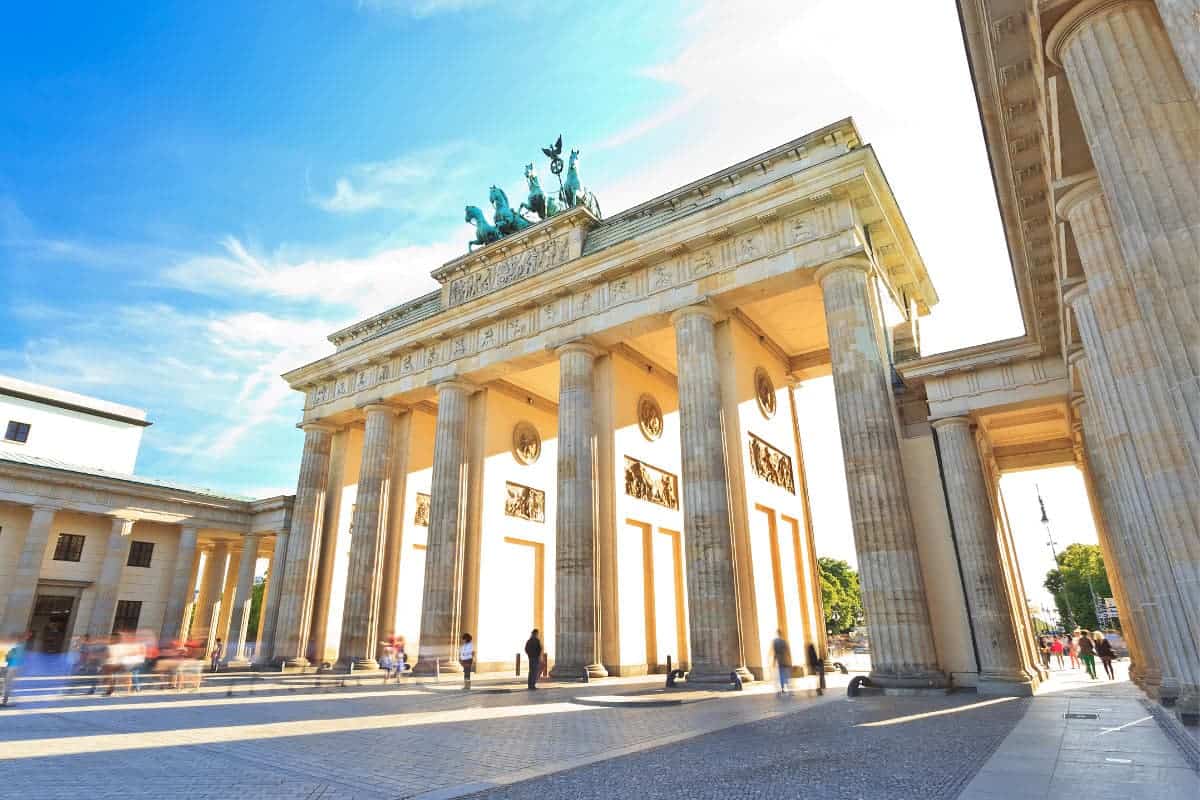
Featured reader comment
Contents: How to spend one day in Berlin
Is it worth spending a day in Berlin?
Is one day in Berlin worth it?
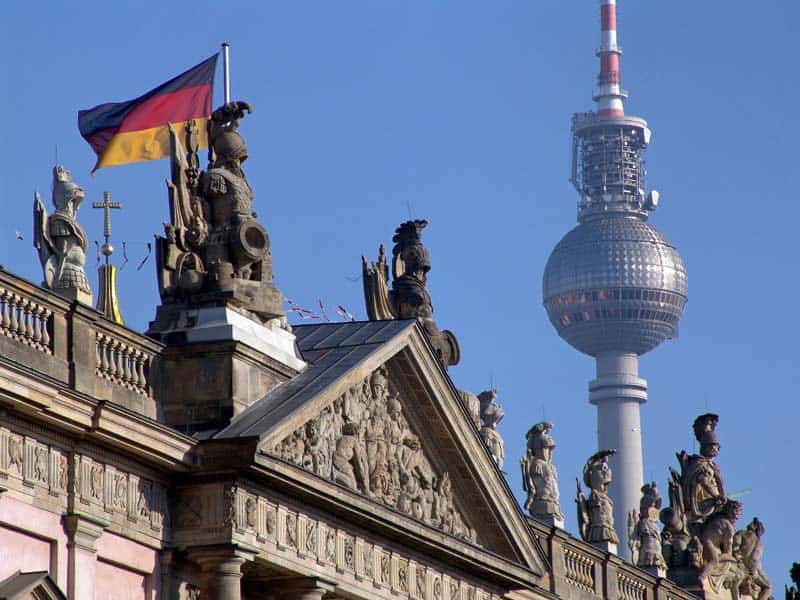
First, let’s get this question out of the way.
How can you do Berlin justice in just one day? It’s such a complex, historically rich city – bursting with stories, scars and soul.
We’ve kicked around Germany, visiting relatives in Hamburg and Rheinfelden.
We’ve explored Dresden, soaked in the Friedrichsbad baths in Baden-Baden and discovered the charms of Bonn.
But Berlin is on a whole other scale.
It’s huge – nine times the size of Paris, Germany’s largest city.
So we knew a day wouldn’t really be enough to experience the best of the city. We wouldn’t even have a whole 24 hours in Berlin!

Still, we figured we could at least get a taste of it.
You won’t see everything in a day – but you can scratch the surface. And in our view, any time in Berlin is time well spent.
Getting around Berlin

As you’re short on time, you’ll want to get around in the most efficient way possible. That might mean choosing the quickest transport – or turning the journey itself into part of the adventure.
Public transport
Berlin has an excellent public transport system, the U-Bahn and S-Bahn trains.
They’re the best way to get around the city as the locals do.
The U-Bahns usually run underground and the S-Bahns typically run along the street, with stops at major train stations and attractions throughout the city.
Like major metro systems around the world, the trains run every few minutes and you can easily purchase tickets on a machine (you can change the language to English).
Berlin day tours and half-day tours
If you don’t want to negotiate Berlin’s public transport network, a great way to delve into Berlin’s complex history and see the sites is by taking a guided tour.
Half-day Berlin walking tour

This top-rated, half-day walking tour of Berlin runs through the history of the city while exploring its significant Mitte district.
- You’ll learn about the Prussian, Imperial, Nazi, Cold War and modern eras from your knowledgeable guide along the way.
- Famous landmarks you’ll visit include the Topography of Terror, Checkpoint Charlie and the Holocaust Memorial.
- Very well-priced, it’s received 5-star ratings from more than 5,000 reviewers.
Sightseeing bus tour

A panoramic bus tour was included in our all-day Berlin excursion. We saw iconic attractions like the Reichstag Building, Checkpoint Charlie and the Brandenburg Gate.
If you’re spending your time independently and want to take a similar bus tour, you could do a loop on a hop-on hop-off bus tour.
You’ll see much of what we saw.
Berlin Wall and Cold War Bicycle Tour

Walking through Berlin is like stepping through time, and one of the eras that has left its more recent marks is the Cold War era.
You can get a feel for this period by riding a bicycle on this popular 3½-hour Berlin Wall and Cold War tour, on which you pedal along the former Berlin Wall.
- It starts at Kulturbrauerei, a brewery in Prenzlauer Berg.
- You’ll learn how and why the city was divided into two for decades and how the wall ultimately came down when Germany was reunited.
- The total distance covered is about 10 miles.
Private full-day tour
For a private tour that takes in the whole city, this customizable tour by luxury van can’t be beat.
Whether you fancy exploring the murals of East Side Gallery, seeing the arresting Charlottenburg Palace or stopping in Mauerpark, Berlin is at your fingertips on this full-day tour!
East Berlin food walking tour

Beyond its deep history, art and culture, Berlin is also a foodie hotspot.
East Berlin may have seen little tourism during its 40 years under communist rule, but a hearty food scene took root, steeped in German and Eastern European flavors. Then when the wall fell, people from all over the world moved in, spicing things up even more.
You can bite right into this on an East Berlin food walking tour by Secret Food Tours.
- You’ll sample traditional German food like currywurst and flammkuchen.
- You’ll also try food from around the world like Turkish sweets (baklava, anyone?) and kebabs.
Best things to do in Berlin in one day
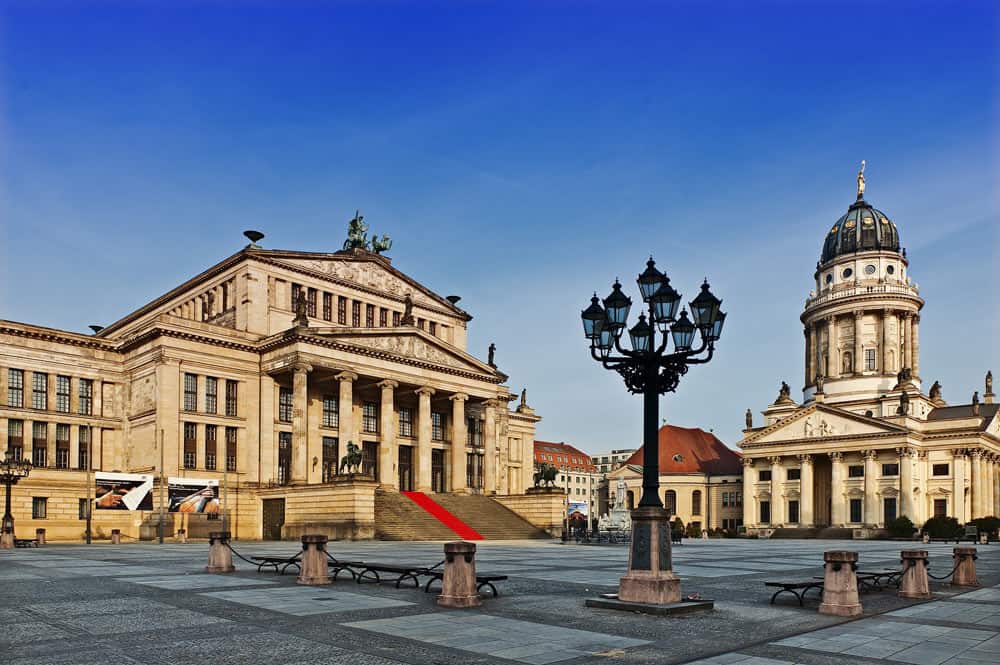
Of course, exactly how you spend your time depends on your interests.
History buffs curious about the Cold War might check out the DDR Museum or join a Cold War walking tour. If World War II history is your focus, the Holocaust Memorial and Jewish Museum are especially powerful.
You won’t be able to do everything on the following list – but here are the best options, so pick what intrigues you most.
1) The Reichstag building
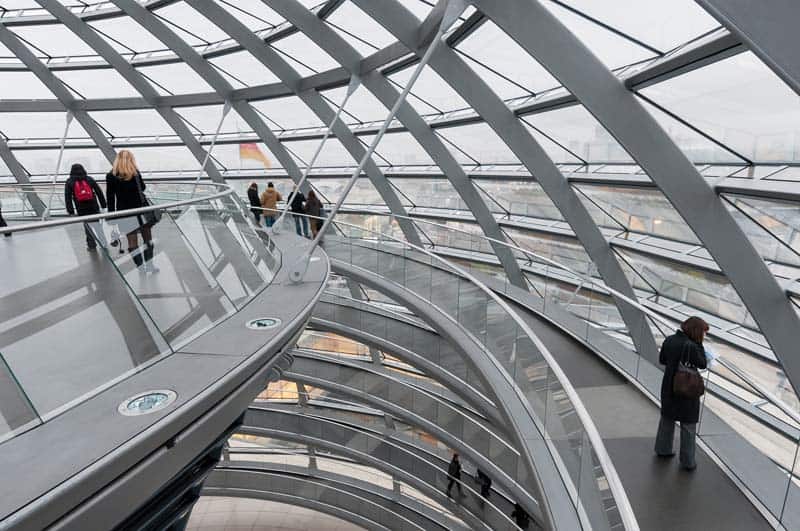
We drove by the Reichstag, the seat of the German Parliament, on our bus tour. (You’ll see it if you take the hop-on hop-off bus we mentioned above.)
You can also visit the Reichstag. You’ll learn about Germany’s political history and get a tremendous view of the city from its iconic glass dome.
Note that you’ll need to register in advance to visit inside the Reichstag.
2) Checkpoint Charlie

“Checkpoint Charlie” was the infamous checkpoint between East and West Berlin, where (a very limited number of) people used to cross the international border between East and West Germany.
It’s a little commercial now, with U.S. and Soviet Union flags, sandbags on display and actors dressed in fake soldier uniforms too (charging tourists to have their photos taken).
3) Traenenpalast
While Checkpoint Charlie is an historically significant place, there’s a much more authentic alternative – Traenenpalast (Palace of Tears).
This is a museum near another historic checkpoint, where you can learn about what the partition of the city meant for the people of Berlin.
4) Brandenburg Gate

The massive, neo-classical 18th century Brandenburg Gate, close to Pariser Platz, is a must-visit on any one-day tour of Berlin.
Built on the orders of Prussian King Frederick William II between 1788 and 1791, the Brandenburg gate gained increased significance during the Cold War era, when it was situated in no man’s land between East and West Berlin.
After the wall fell, it became a symbol of one united Germany. Today, it stands as a broader symbol of unity and peace.
5) Gendarmenmarkt

A short walk from the Brandenburg Gate is Berlin’s most beautiful public square, the Gendarmenmarkt.
In summer, it hosts the Classic Open Air Festival, when for a few days, orchestras play classical music there.
In winter, it’s the site of one of the best Christmas markets in Berlin. You’ll also find a mini Oktoberfest here at the start of fall.
6) Berlin Wall Memorial

You’ll find the Berlin Wall Memorial (along with a piece of the original wall) at the former site of the partition between east and west.
Today, remnants of the Berlin Wall serve as a reminder of the time the city was split into two and as a memorial to the people who lost their lives trying to cross it – which eventually led to protests and the wall ultimately being torn down.
7) East Side Gallery

Another top attraction in Berlin is the “East Side Gallery” – a one-mile-long section of the former Berlin Wall.
It’s covered with 105 paintings by artists from all over the world. They were invited to the city in 1990 (a year after the wall fell) to paint on the wall.
It’s probably the largest open-air art gallery in the world.
The most famous painting is that of former Soviet leader Leonid Brezhnev kissing Erich Honecker, leader of pre-1989 East Germany.
On our bus tour, we stopped at the East Side Gallery. But could we get close enough to take a decent photo?

A long line of people snaked past the painting, all patiently waiting their turn for a good look at “The Kiss.”
We had to content ourselves with shooting from across the street, hoping for gaps in between slow-rolling buses.
The Berlin Wall Museum is close by. There, you can learn some stories about the wall and what it represented.
8) The German Historical Museum

Packed with some 8,000 exhibits, the German Historical Museum (Deutsches Historisches Museum) is considered one of the best museums in Berlin.
We thought it superb as we explored it with a hand-held English audio guide during our afternoon free time in Berlin.
Everything from art and armor to Napoleon’s hat to pieces of the Berlin Wall are on display.
The upper floor covers Germany’s history from the Middle Ages to the end of the First World War.
But we devoted most of our time to the ground floor exhibits covering Hitler’s rise, WWII and then the Cold War and the partition and subsequent reunification of Berlin.

Though we already knew about the atrocities associated with Hitler, learning more about those tragic times in Berlin (where he ruled) made the Nazi regime more poignant for us.
Seeing documents ordering the deaths of some of the 70,000 mentally and physically disabled German patients who were “euthanized” made shivers run up and down our spines.
To bring you back to the present, there’s also a museum café with outdoor seating under leafy trees if you’d like a drink and a bite before continuing on with your exploration of Berlin.
9) Memorial to the Murdered Jews of Europe

Sobering and chilling, the Jewish Holocaust Memorial is a place of remembrance for the six million Jewish people murdered during the holocaust. It’s another one of the most significant World War II sights to see in Berlin.
It consists of 2,711 concrete stelae, all of different heights, serving as a memorial to the Holocaust’s victims.
There’s also an exhibition where you can hear some emotional real-life accounts from victims of the Holocaust and their friends and family.
10) Potsdamer Platz

Once an historic trading center in the heart of Berlin, Potsdamer Platz is today the buzzing heart of the city, known for its high rises and shopping venues.
The perfect place to people watch, this public square and traffic intersection is thought of as the Times Square of Germany and is one of the best places to see in Berlin in 1 day if you want to enjoy the modern culture of Berlin.
11) Museum Island

A UNESCO World Heritage Site right in the heart of Berlin, Museum Island is home to several museums and notable buildings, including the Pergamon Museum, the Bode Museum, the Old National Gallery, the Old Museum and the New Museum.
It’s worth visiting the Museum Island complex. Even if you don’t enter any of the museums on your Berlin one-day trip, you should walk around and see the buildings’ exteriors.
12) Berlin Cathedral (Berliner Dom)

One building you’ll gape at for sure on Museum Island is the Berlin Cathedral (it’s located in the center of Museum Island).
There’s been a cathedral here since 1451, although the current building dates back to 1905 (and it was completely restored in 1993).
With its iconic aqua-colored dome, Berliner Dom is one of the city’s most famous landmarks. And if you want to take in a view of the whole city below you, you can even climb 270 steps up to the dome at the top.
13) Hackescher Markt

If you’re a shopaholic, you won’t find any more unique a place than Hackescher Markt (Hacke’s Market).
Don’t expect any chain stores here. Instead, you can shop in independent stores selling cutting-edge Berlin fashion. (It’s one trendy place!)
14) Prenzlauer Berg
Just a couple of decades ago, Prenzlauer Berg was a quiet and run-down neighborhood, slightly away from the center of Berlin.
Today, it’s renowned for its flower-laden streets, trendy cafés and restaurants and lovingly restored buildings – the perfect place to pop by for a coffee break or brunch.
15) Berlin TV Tower

If you have a yen for heights, you might like to zip to the top of the Berlin TV Tower, the tallest structure in the capital (at 1,207 feet high) to take in a panoramic view of the city.
Its express elevator whisks you up to the viewing platform (which is 666 feet high above the ground) in just 40 seconds.
The best time to do this is at sunset, when you can see the city lights begin to twinkle around you!
16) Jewish Museum
This museum is essential visiting for anybody truly interested in World War Two history.
The Jewish Museum (Judisches Museum) covers the extensive history of the Jewish faith in Germany, from its origins in the country (likely before the 4th century) to the genocide that happened during the Second World War period – right up to what it means to be Jewish in Germany today.
17) Pergamon Museum

For something rather more classical, check out the Pergamon Museum.
Located on Museum Island, this exhibition boasts full-scale reconstructions of Greek and Roman sculptures, artifacts and architecture.
You can book a guided tour of the Pergamon Museum that also includes a tour of the New Museum (Neues Museum) and comes with skip-the-line tickets.
18) Old National Gallery (Alte Nationalgalerie)

To immerse yourself in Berlin’s historic art culture, visit the Old National Gallery (Alte Nationalgalerie), also on Museum Island.
Dating back to 1862, the gallery was built on orders from King Frederick William IV of Prussia. It was built in Renaissance Revival and Neoclassical styles.
With over 2,000 paintings on display, you’ll find works by Monet and Renoir, along with entire exhibitions by artists like Adolph Menzel and Caspar David Friedrich.
19) Topography of Terror
One of Berlin’s most historically expansive museums, the Topography of Terror museum explains how the Third Reich rose to control Germany and later (for a time) huge swathes of Europe.
There’s a lot of information in this museum.
But it explores this part of history in a lot more detail than other museums, making it a very worthwhile place to visit in Berlin.
20) Unter den Linden

Berlin’s grand central boulevard, Unter den Linden, is named for its famous linden (lime) trees lining the boulevard.
It extends for one mile, from the Brandenburg Gate, past some of Germany’s most historic buildings and ending at the Schlossbruecke (Palace Bridge).
You’ll also have no problem seeing this magnificent boulevard on a Berlin one-day trip, as many of Berlin’s famous sights are strung along it and located at either end.
21) Beer garden

If you’re a fan of a tipple, you simply can’t leave Berlin without drinking in one of their famous beer gardens! Plus, it’s easy (and fun) to squeeze this in.
You don’t need to go far to find a beer garden in Berlin. Convenience stores even have tables outside where you can enjoy drinks that you’ve bought in the store!
However, if you want to check out Berlin’s best, Schleusenkrug is ideally located in the middle of Tiergarten, on the banks of the Spree River.
This classic beer garden serves a range of German beers plus other drinks (and you can wave to boats gliding past on the river).
How many days in Berlin should you spend?
How long is a piece of string?
Before our one-day visit, one of us had previously spent five days in Berlin, bouncing between museums, restaurants and outdoor attractions – and she’s still clamoring for more!
On a one-day Berlin itinerary, you can only tick off a few attractions. But most tourists spend at least three days.
If you want to go deeper, you can certainly spend five or seven days taking the city in.
If you’re staying for two to six days, a Berlin Welcome Card can offer excellent value to see the city’s best attractions.
What to do if you have more time
We’ve shared the must-see Berlin attractions above.
But if you have a little longer in the city, you might want to do a day trip or check out the following four attractions (also highly recommended).
Charlottenburg Palace

A stunning Baroque palace, the Charlottenburg Palace is found in the posh Charlottenburg neighborhood of Berlin.
It was built between 1695 and 1699 as a summer palace for Sophie Charlotte, the wife of Elector Frederick III of Brandenburg.
Some highlights include the Rococo-style Golden Gallery in the New Wing of the palace, the fabulous Porcelain Cabinet and the palace collection of 18th century French paintings.
Its gardens are also a delight to stroll around.
Tiergarten

Sprawling out over 500 acres, the Tiergarten is home to a famous zoo, Berlin’s Victory Column, tree-lined paths and a lake. It’s an oasis in the bustling city and idyllic on a spring or summer’s day.
David Hasselhoff Museum
Berlin encompasses around 170 museums – and the David Hasselhoff Museum is the quirkiest!
David Hasselhoff (of Baywatch fame) is adored in Berlin.
He performed a concert on top of the Berlin Wall just before it was taken down. His song Looking for Freedom became an unofficial anthem of East Germans wanting to join democratic Western Europe, and he’s still celebrated here today.
A tiny exhibition in the basement of The Circus Hostel, the museum is basically a shrine to David Hasselhoff, with memorabilia and photos dedicated to the actor and singer.
If you’re after a weird and wonderful Berlin tourist attraction, look no further!
DDR Museum

The DDR Museum gives you a glimpse into what East Germany was like in the Cold War era.
See a Trabant car, step into a living room from the 1970s and learn about what the school and medical system were like during Soviet rule.
On the way back to our ship after our Berlin visit (where we learned a lot more about East Germany at the time), we got into an interesting discussion with our tour guide, Julia.
Not everyone who lived under the thumb of communist Germany was unhappy with their lives.
“My parents liked parts of the East German rule,” she shared.
They were born in the former East Berlin in the 60s, shortly after the Wall was erected, so communist life would have been the only way of life they knew.
One example: “They liked the employment situation. Everyone knew they’d have a job. If the government planned for 20 doctor positions in five years, they’d allow 20 students to study medicine.”

Where to stay in Berlin
If you’re overnighting in Berlin (or better yet, staying in Berlin for three days or more), there are plenty of excellent hotels you can choose from.
Hotel de Rome

Since we love hotels with a rich history, we’d pick the 5-star Rocco Forte Hotel de Rome.
Located right in the historic heart of East Berlin, this luxury hotel started life as a 19th century Neoclassical bank and was converted into a hotel at the start of the 21st century.
Its bright and elegant rooms have plush comfortable beds, squishy sofas, large windows and deluxe bathrooms with heated floors.
Dine at its highly-regarded CHIARO restaurant (Italian cuisine) or enjoy a drink on the fifth-floor rooftop terrace.
The Niu Hide

For a less expensive option, you might like The Niu Hide.
Inspired by the vibrant art on the Berlin Wall and other street art around the city, this trendy hotel in East Berlin sports graffiti-style paintings and an historic Trabant car in its lobby.
The rooms are modern, with comfortable beds, flat screen TVs, coffee machines and power showers.
The hotel also features a cool lounge, bar and a delicious breakfast buffet.
Now you know what to see in Berlin in one day!
There are so many wonderful places to visit in Berlin that a day certainly isn’t enough time to see them all.
But if that’s all the time you’ve got, make it count! Squeeze in as many museums, historical sites and modern cultural attractions as you can. The capital of Germany is a true bucket-list city – whether you have a day or a week.
Just be prepared to return.
We’re pretty sure you’ll be planning your return trip before you’ve even left!
Pssst! Save this Berlin travel guide for later on Pinterest

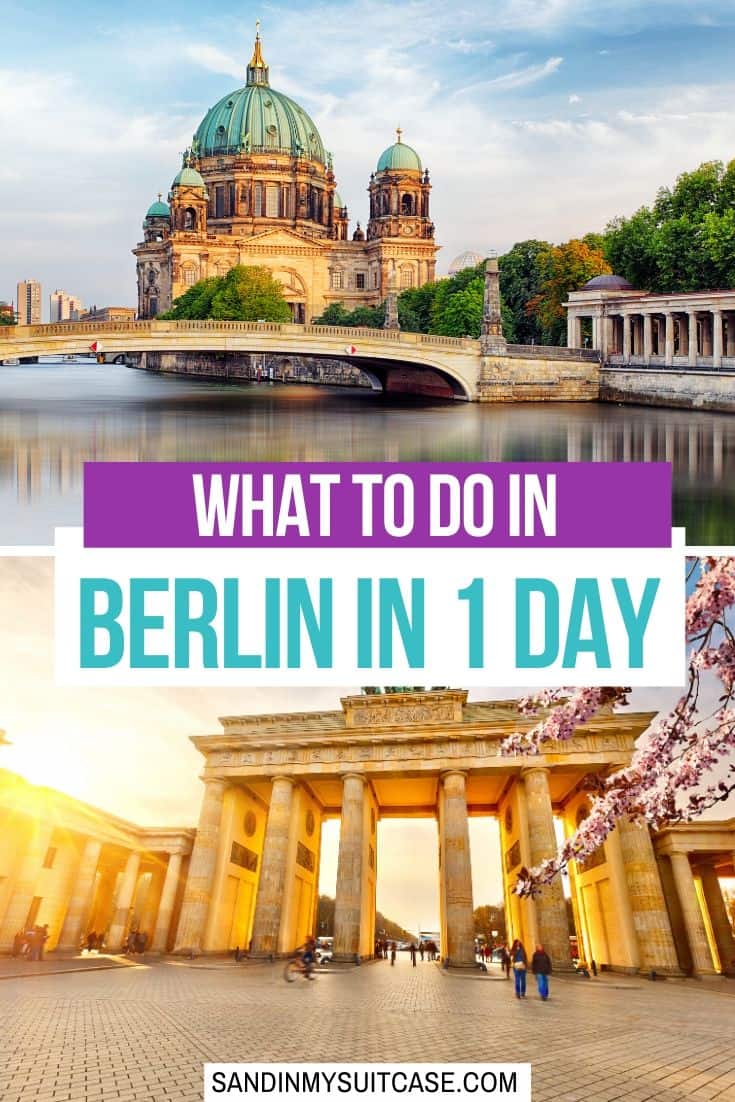
Our top travel tips and resources
General trip planning: TripAdvisor is a helpful starting point, offering loads of user reviews on hotels, restaurants and things to do.
Hotels: Booking.com is our go-to for scoring a “wow” hotel – or at least a decent one – often at lower rates than the hotel’s own website. We especially like Booking’s flexible cancellation policy! (You may prefer Expedia for booking hotels in the U.S. or Mexico.)
Vacation homes, condos and rentals: We prefer and use Vrbo (Vacation Rentals by Owner).
Flights: For the cheapest flights, search on Google Flights or Expedia. (Just be aware Expedia tickets are often non-refundable. If you want more flexibility, it’s usually worth booking directly with the airline, even if it costs a bit more.)
Airport lounge access: We love (and have) Priority Pass for comfy lounge seats, free snacks and drinks, complimentary WiFi and sometimes even showers and spa services!
Tours: For the best local food, walking and other guided tours, plus skip-the-line tickets to attractions, check out Viator (a TripAdvisor company) and GetYourGuide.
Car rental: Renting a car is often a great way to explore off the beaten path. Discover Cars searches car rental companies so you get the lowest rates.
eSIMS: Stay connected affordably with Airalo eSIMS covering 200+ countries and trusted by 10 million+ users, including us! (No more huge roaming bills!)
Travel insurance: SafetyWing is designed for frequent travelers, long-term adventurers and digital nomads. It covers medical expenses, lost checked luggage, trip interruption and more. We also have and recommend Medjet for global air medical transportation.
Travel gear: See our travel shop to find the best luggage, accessories and other travel gear. (We suggest these comfy travel sandals for city walking, the beach and kicking about.)
Need more help planning your trip? Check out our travel tips and resources guide for airline booking tips, ways to save money, how to find great hotels and other crazy useful trip planning info.
If you make a booking or purchase through our site, we may earn a small commission (at no cost to you). Thanks!
About the authors

